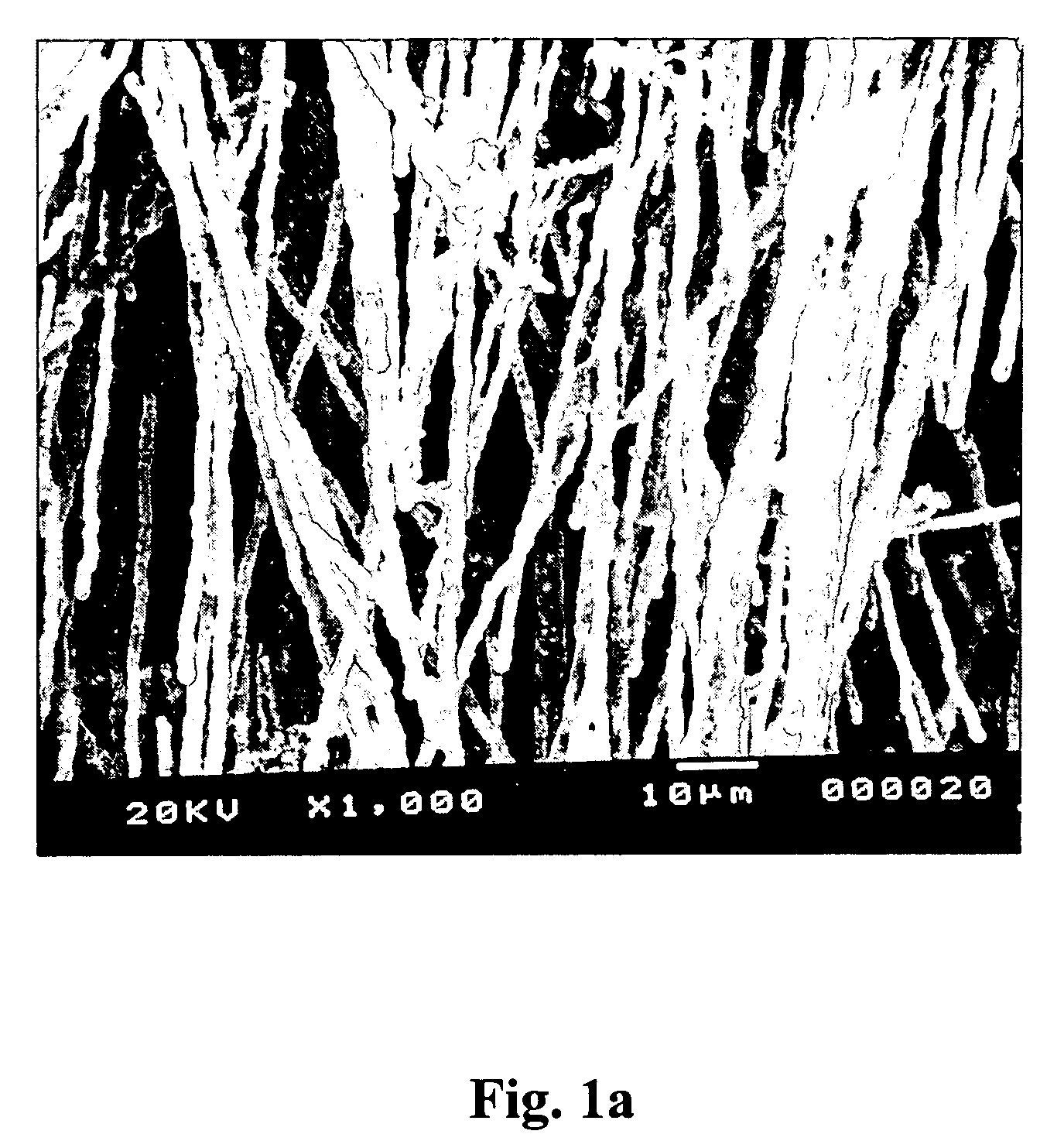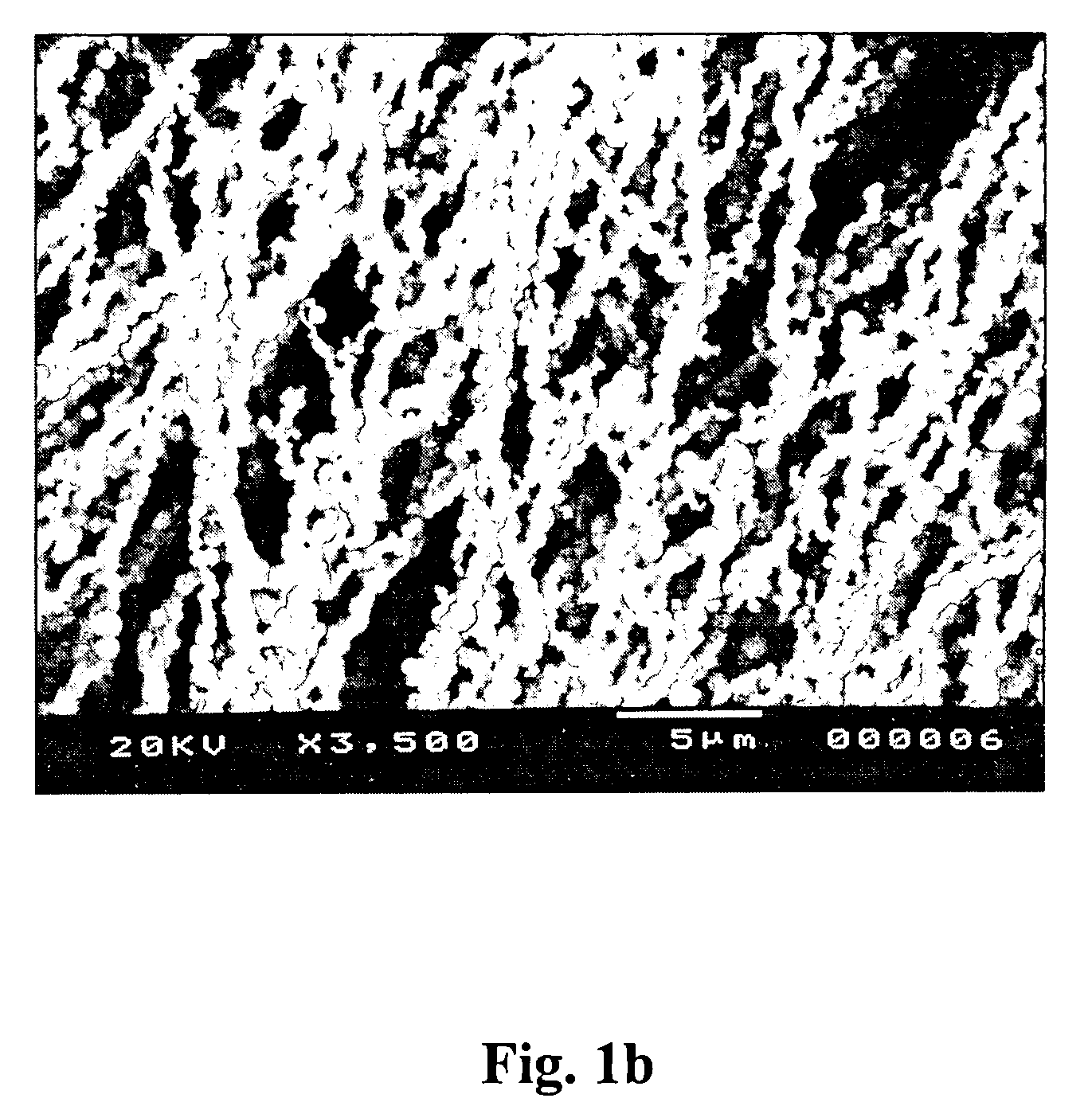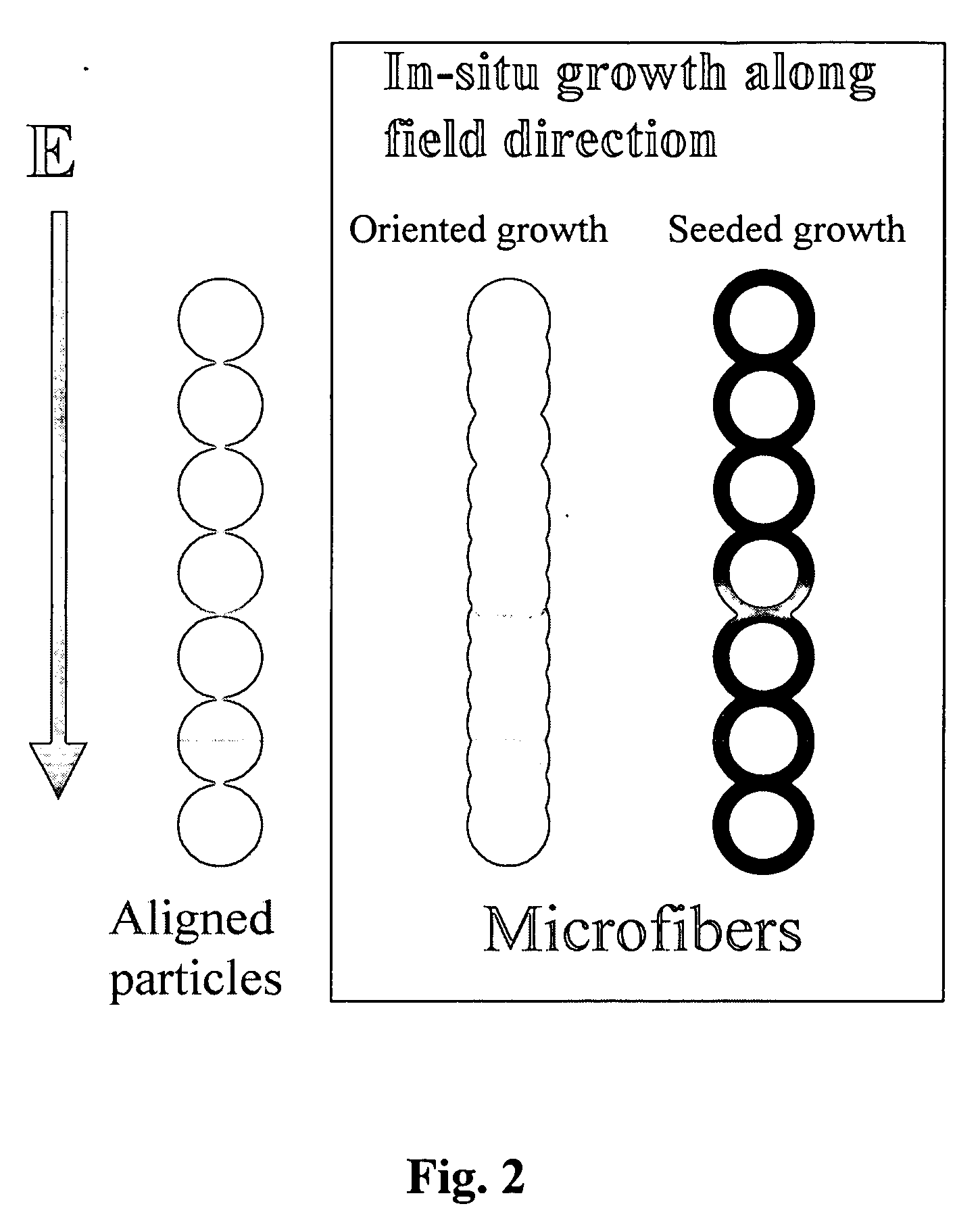Production of aligned microfibers and nanofibers and derived functional monoliths
- Summary
- Abstract
- Description
- Claims
- Application Information
AI Technical Summary
Benefits of technology
Problems solved by technology
Method used
Image
Examples
example 2
[0051] A solution containing 0.2 M TEOS, 4.86 M H.sub.2O and 2.0 M NH.sub.3 in tAA (Condition 5 in Table 2) was used in the thin (1-mm path) quartz cuvette at room temperature, pulsed DC field (4.5 kHz). When the applied voltage is too high (.about.10 kV), Joule heating due to the higher conductivity of reactive solution (TEOS-H.sub.2O--NH.sub.3-tAA) relative to the pure tAA solvent used in the earlier particle alignment experiments caused solvent evaporation, which generated bubbles that stirred up the bulk solution in the cuvette reactor. Fluid flow in the solution caused the failure of electric field alignment during the in-situ precipitative solid particle formation. However, at lower voltage (1.84 kV), the bubbling from solution was reduced significantly. During the reaction, there were only a few small bubbles evolving from the high-voltage electrode surface, and this did not disturb the static structure of the precipitated gels. Thick precipitate gel solid that spans between ...
example 3
[0056] Two equal volumes of the solutions (TEOS-tAA and water-ammonia-tAA) were mixed vigorously by hand and poured into the electrofibrilation cell. The electrofibrilation cell is a standard quartz cuvette of either 1-mm path (1 mm.times.10 mm.times.45 mm) or 1-cm path (10 mm.times.10 mm.times.45 mm) with two parallel-steel-plate (.about.1 mm thickness) electrodes attached to the side walls. To enhance the rate of solid microfiber production, some pre-made silica microsphere particles were used as seeds in reaction solution (Condition 6, Table 2). The effect of seeding on nucleation, growth, aligned particle-particle connection during reaction under field, and eventually on the microstructure of the fibrils was studied. Such seed-solution mixtures were subjected to no field (as control) or 1.5 kV pulsed DC field (4.5 kHz). SEM examination of solid samples collected after 1.5 hours clearly indicated that microfibers consisting of connected microsphere particles were obtained due to ...
example 4
[0058] To make reasonably sized solid monoliths for practical applications, sufficient mass quantities of aligned microfibers needed to be produced during the precipitation reaction for next-step wet pressing. A larger volume square tube electrofibrilation reactor (10 mm.times.10 mm.times.130 mm, 10 mL liquid capacity) was designed and constructed for this purpose. Corresponding to the length of the cells, two long, parallel-plate electrodes (.about.8 mm spacing) were attached to the inner sides of the reactor walls. Fabrication of monolithic solid was performed by in-situ reactive microfibrilation during hydrolysis / condensation (2-3 hours), followed by "wet-pressing" (see FIG. 3a for a schematic set up showing the electrofibrilation reactor 5, solid precipitation reaction media 10, the piston 15 and the solid cake slab 20) of suspended aligned microfibers into a thick solid slab 20 using a Teflon piston 15 under electric field. The piston separated the microfibers (suspended and al...
PUM
| Property | Measurement | Unit |
|---|---|---|
| Angle | aaaaa | aaaaa |
| Molar density | aaaaa | aaaaa |
| Molar density | aaaaa | aaaaa |
Abstract
Description
Claims
Application Information
 Login to View More
Login to View More - R&D
- Intellectual Property
- Life Sciences
- Materials
- Tech Scout
- Unparalleled Data Quality
- Higher Quality Content
- 60% Fewer Hallucinations
Browse by: Latest US Patents, China's latest patents, Technical Efficacy Thesaurus, Application Domain, Technology Topic, Popular Technical Reports.
© 2025 PatSnap. All rights reserved.Legal|Privacy policy|Modern Slavery Act Transparency Statement|Sitemap|About US| Contact US: help@patsnap.com



